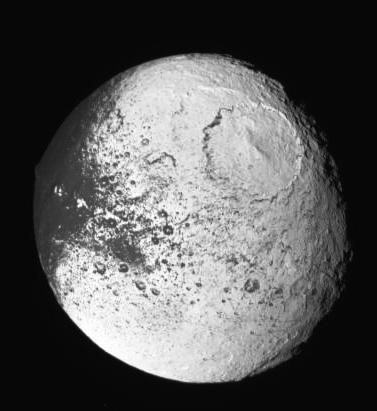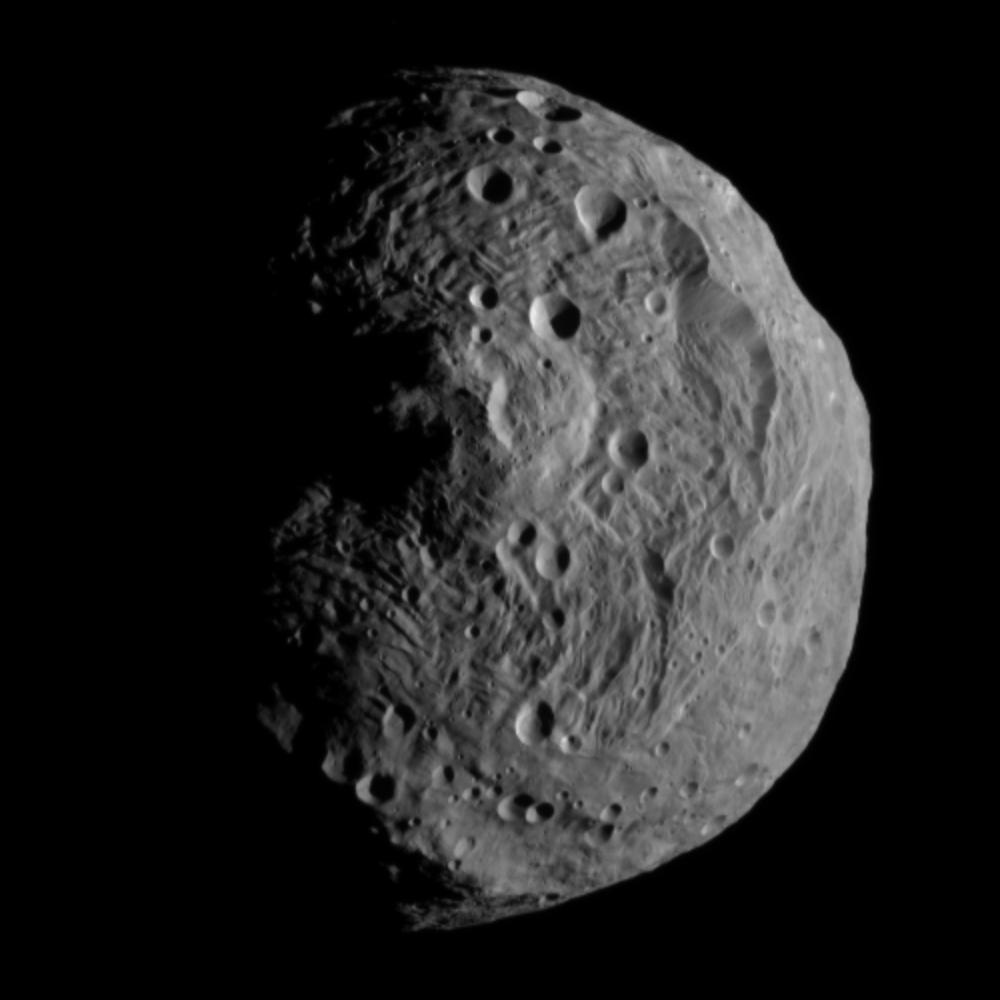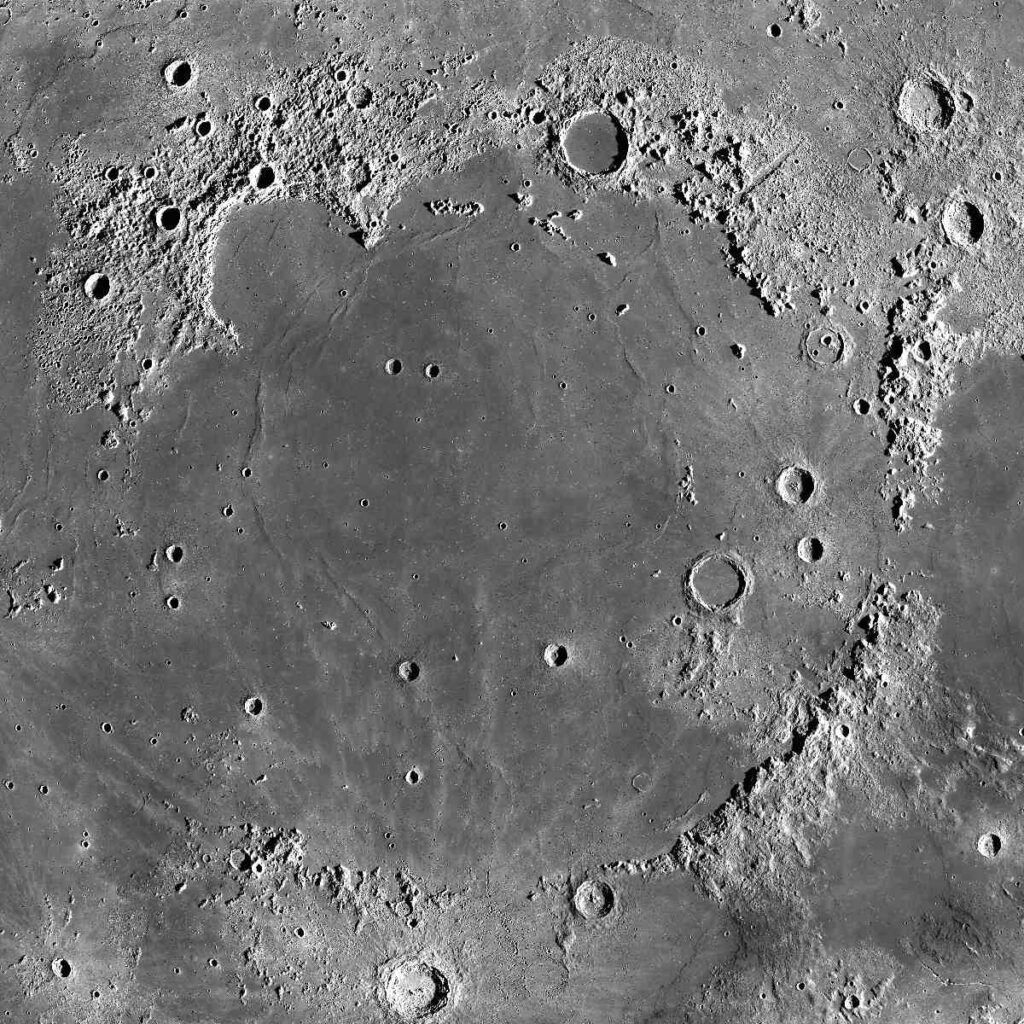*This post may contain affiliate links. This means we may make a commission if you purchase an item using one of our links*
Craters are formed as a result of some of the most destructive acts a planet or celestial objects, like the moon, can incur.
Within our solar system there are easily over a few hundred million to billions of craters with thousands easily eclipsing the 100km diameter (which as a reference is equivalent to about 1093 full sized football fields).
Of course this article isn’t just going to look at some of the bigger craters in our solar system… It’ll be covering the biggest craters that we currently know of!
Also before continuing this list I do want to state that I’ll only be covering confirmed impact craters and not basins that aren’t confirmed as being such (like the Moons 3000km Procellarium crater).
With that being said, it’s time to cover the 9 largest craters starting with smallest first.
9. Engelier (504km) Iapetus
Table of Contents

Engelier is the first crater on this list and at 504km, it’s clearly very very big. The crater can be found on one of Saturn’s moons, namely Iapetus, which isn’t much bigger than this crater coming in at 1469km in diameter.
The fact that Engelier literally covers a third of Iapetus’ diameter is very impressive yet, it’s still not the largest impact on its surface…
Of course I’ll get to that next but as it stands Engelier is number 9 on this list.
8. Rheasilvia (505km) Vesta

Rheasilvia is ever so slightly bigger than Engelier coming in at a diameter of 505km. This impact crater is located on Vesta which is an asteroid that is one of the largest ones we’ve observed in the asteroid belt and was discovered all the way back in 1807 by German astronomer Heinrich Olbers.
The impressive fact about this impact crater is that Vesta’s diameter is marginally larger than it coming in at 525km. This means that at any given time a very powerful telescope (unlikely to be home based one) will mostly be observing Rheasilvia if pointed towards Vesta, which is pretty darn cool if you ask me.
7. Turgis (580km) Iapetus

Now for the largest crater on Saturn’s moon Iapetus and the 7th biggest crater in our solar system, it goes to Turgis. Turgis comes in at a massive diameter of 580km which just for reference would be equivalent to the size of just under 6343 pitches from end to end.
Of course this number is quite unfathomable but, it goes to show how even the 7th largest on our list is really difficult to measure through normal means.
Regarding Turgis’ origins, it was initially discovered around the same time that iapetus itself was discovered which was on the 31st December 2004. Of course considering how the crater covers around 40% of Iapetus’ diameter, it wouldn’t be surprising that shortly after that Turgis was seen.
After being discovered the crater was named after Turgis of Turtelose (Tortosa).
6. Rembrandt (715km) Mercury

Rembrandt is Mercury’s second biggest impact crater and comes in at humongous 715km in diameter. It was initially discovered in 2008 when the MESSENGER spaceprobe did a fly by across the planet and spotted it whilst orbiting.
Interestingly Rembrandt is estimated to be 3.9 billion years old yet according to the impact craters on its rim, it also regarded as being quite young (ironically) in the grand scheme of things.
As for how Rembrandt got its name, it is based off of a famous artist from the 1600’s called Rembrandt Harmenszoon van Rijn, with the name officially being approved in February 2009.
5. Mare Imbrium (1145km) the Moon

Imbrium is at the midway point of this list, coming in as the second largest crater on the Moon and the 5th largest impact crater that we know of. At a massive diameter of 1145km, Imbrium is over 400km bigger than number 6 on this list and around double the size of Turgis.
That means you could fit around 13,000 football fields spanning the length of Imbrium’s diameter, which is well… Very hard to picture in our heads and honestly just hard to fathom as a whole.
Imbrium according to a few calculations regarding uranium lead dating methods (yeah you don’t really need to know how this works) estimates the impact to be roughly 3.93 billion years old, which of course is hella old.
4. Caloris Planitia (1550km) Mercury

The 4th largest impact crater within our solar system, also the largest crater on Mercury, is Caloris Platnitia. It comes in at a diameter of 1550km. The crater was initially discovered all the way back in 1974 by the Mariner Spaceprobe however, at the time only half of the crater was pictured.
It was only in 2008 when the MESSNEGER Spaceprobe did a fly by when astronomers were finally able to take a picture of Caloris in its entirety.
As for how Caloris was named, it was based off what is called the Caloris Montes mountains surrounding its rim. Caloris is also estimated to be around 3.8 – 3.9 billion years old so, not too different in age to most of the other huge craters in the solar system.
3. Hellas Planitia (2300km) Mars

Hellas Planitia is the second largest crater on Mars whilst also the 3rd largest crater we know of in our solar system. It is located in the southern hemisphere of Mars and comes in at a diameter of 2300km whilst going down a depth of 7.15km at its deepest, making it easily among the largest impact craters in out solar system.
Hellas was also one of the first features of mars that was discovered by telescope and has in its time had 2 names. In 1867 the basin was initially called “Lockyer Land” named after Joseph Lockyer, an English astronaut.
This was of course later changed to Hellas (which happens to mean Greece in Greek) by another astronomer called Giovanni Virginio. Also, it is worth noting that Hellas is estimated to be between 3.8 – 4.1 billion years old, making it one of the oldest craters we know of.
Nevertheless, it’s safe to say that Hellas is insanely huge and well… You definitely wouldn’t want to find yourself in the depths of its surface.
2. South-Pole Atiken Basin (2500km) the Moon

South-Pole Atiken (SPA) is the second largest impact crater we know of and it is located on the moon. It comes in at a diameter of 2500km and also reaches a depth of 6.2km – 8.2km.
In short SPA is the largest, deepest and oldest crater that we know of on the moon being around 4 billion years old however, it was only around the mid 1960’s when a photo by the Lunar orbiter program was taken to really let us know of the true size of this impact.
One of its recognizable features besides its size is the mountain chain that is located on its outer rim. This mountain chain set up is also sometimes referred to as the “Leibnitz mountains”
Furthermore, which shouldn’t be all that surprising is that SPA is located on the south of the moon and it is also easily recognised due to the darker nature of its surface.
1. Utopia Planitia (3300km) Mars

Out of all the craters we’ve discovered within our solar system, Mars takes both the third and first spots on this list. I’d say it’s even safe to say that Utopia is at such a size that you’d really struggle to imagine that it could even be a crater…
Utopia is the largest impact basin/crater in our solar system coming in at a diameter of 3300km. There’s no specific date stating when it was first actually discovered but, if we go all the way back to September 3rd 1976 a rover called Viking 2 did land on Utopia’s jaded and icey surface so, that would mean we’ve at the very least known of this crater for half a century.
To be put into perspective just how big Utopia’s surface area is, it’s quite a bit bigger than Canada’s Mansel island (3180km). So, yeah there’s a reason why it’s the largest impact crater basin in our local solar area.

On a side note, if you’re a fan of star trek, you may already know that Utopia is actually the site of a major federation shipyard with the likes of USS Enterprise-D and USS Defiant actually being built there.
Summary
If you’ve been curious about how large impact craters within our solar system can be, well now you know!
Of course if we’re to look well outside of our system and gawk into the impacts craters created elsewhere within our galaxy, there are bound to millions of craters far larger than what we can find in our solar system but, as our technology isn’t up to par yet, we’ll have to wait a very long time before knowing for sure.
With that being said, if you’ve enjoyed learning about the craters from the 9 largest impacts we’re aware of, we’d very much appreciate it if you shared this article.
On that note, thanks for reading!

